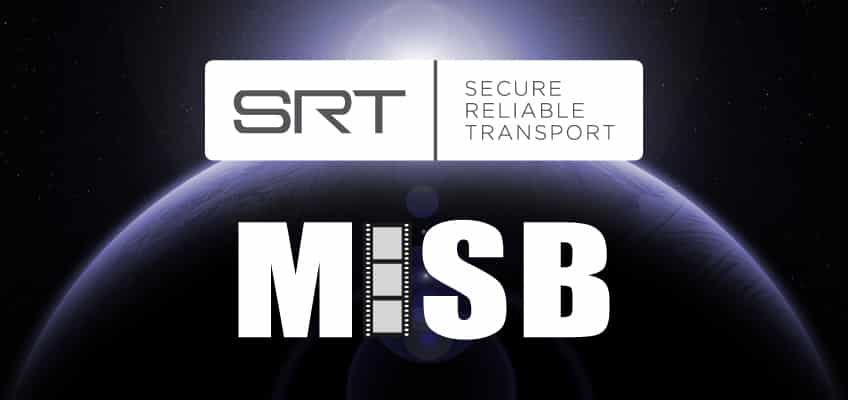Late last year, the Secure Reliable Transport (SRT) protocol, originally developed and pioneered by Haivision, was officially included in the Motion Imagery Standards Profile (MISP) as an approved mechanism for reliably transmitting motion imagery over unpredictable datalinks. I spoke with John Leipper, Haivision’s Director of Product Strategy for Defense, to better understand the impact of this milestone and what it means to Haivision’s defense customers.
Let’s start right at the beginning. Can you explain what the MISB and MISP are?
The MISB is the Motion Imagery Standards Board, an official body that establishes standards for both still and motion imagery, audio, and associated geospatial metadata for use within the Department of Defense (DoD), Intelligence Community, and National Geospatial-Intelligence Agency (NGA). A predominant aspect of what they oversee is Intelligence, Surveillance and Reconnaissance (ISR) video with geospatial metadata, often referred to as Full Motion Video (FMV), which plays a critical role in developing intelligence from remote sensing.
The MISB authors the MISP which references technical specifications developed by the MISB and commercial industries to further promote the interoperable exchange of data within the imagery and geospatial metadata domains. Per the MISB:
“The MISP provides requirements and general guidance of Motion Imagery Standards for the ISR community to achieve interoperability in both the communication and functional use of Motion Imagery Data.”
Standards provide the foundation for interoperability between systems and MISB’s mission is to ensure interoperability of motion imagery formats with other types of sensor inputs, making critical intelligence available to those that need to be in the know. Interoperability is the ability of systems, units, or forces to exchange data, information, material, and services to, and accept the same from, other systems, units, or forces. This enables the efficient flow of intelligence, which is key to reducing cost, effort, and time when specifying, implementing, testing, and using motion imagery systems.
Over the years, MISB has developed a range of standards profiles across H.264/AVC and H.265/HEVC and has defined how to use a MPEG-2 transport stream to carry well-timed video and metadata so they’re tightly matched from the source. This preserves data integrity throughout the dissemination chain by ensuring video frames accurately correspond with metadata packets when received and interpreted by downstream systems.
The MISP and related MISB standards also define the acceptable compression formats and containers, as well as the content of the data that populates these structures. The clearly articulated definitions have reduced the burden for integrators to create and consume MISB compliant data streams and have broadened the reach of interoperability. These standards have enabled collaborative sharing of motion imagery intelligence between the US DoD and allied nations.
Data Loss: The Enemy of ISR Applications
Traditionally, ISR video transport has utilized UDP (User Datagram Protocol) transmission to put packets on the wire. UDP, which comes from legacy broadcast solutions, is a one-way network protocol that lacks a mechanism to recover from lost or out of order packets as they traverse networks from the source to destination. To improve the reliability of UDP transport, strategies such as Forward Error Correction (FEC) algorithms have been applied to the datalink layer to improve the reliability of the encoded video transported, for instance, between an air vehicle and a ground station.
For some Haivision customers, despite having very robust datalinks, they still experience loss levels with UDP transport that results in unacceptable FMV stream quality and contributes to reduced intelligibility. These customers have turned to the open-source Secure Reliable Transport (SRT) protocol as a mechanism to protect their intelligence products that they want to confidently deliver from wherever they are located to wherever they need to go. The SRT protocol solves the problem of delivering reliable FMV over unpredictable networks.
Retransmission to the Rescue
Having seen the benefits of SRT with our defense customers, there was enough of a body of evidence to approach the MISB to include Automatic Repeat Request (ARQ) based retransmission protocols, such as SRT, as another tool to improve intelligence delivery.
Acknowledging that SRT isn’t the only retransmission protocol available, Haivision carefully examined generic and video-specific retransmission protocols before making a recommendation to the MISB. This research included alternate protocols such as the Video Services Forum’s (VSF’s) Reliable Internet Stream Transport (RIST), government retransmission protocols for files like NACK-Oriented Reliable Multicast (NORM), commercial offerings from Zixi and Aspera, and the general-purpose transport protocol QUIC (Quick UDP Internet Connections).
While some commercial based solutions have seen use on defense networks, the need to license and pay to use these solutions are hindrances to universal interoperability. With QUIC and SRT being open source, built upon standards, and pursuing official standards-based adoption through Internet Engineering Task Force (IETF) processes, they provide a greater opportunity for wider adoption and, thus, interoperability. These findings and recommendations were presented as part of the June 2020 MISB forum.
What Does the Inclusion of SRT Actually Mean?
According to the current release of the MISP-2021.2, SRT is identified as an allowed retransmission protocol. ARQ protocols allow systems to detect data stream discontinuities and retransmit lost data within a short window. These algorithms provide a mechanism to trade latency for reliable motion imagery delivery where they were previously limited with UDP.
 Looking Beyond Reliability
Looking Beyond Reliability
John goes on to explain that SRT’s inclusion in the MISP means that it’s now an officially approved method for transmitting data on defense networks and paves the way for more ubiquitous SRT adoption. Beyond retransmission, SRT’s native encryption capabilities enables users, including Haivision customers, to easily secure video transmission via the transport protocol and allows them to leverage public networks to transport their data more securely. As SRT continues to demonstrate greater and broader applicability, along with its inclusion in the MISP, the ISR streaming community’s confidence and trust in the protocol will only continue to grow.
Ultimately, DoD and NATO users can confidently use SRT on their networks, and finally confidently deliver FMV intelligence to those that need it.

